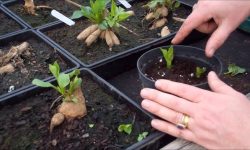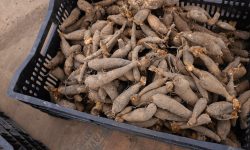Zinnias are among the most popular and rewarding flowers for gardeners of all skill levels. With their vivid colors, fast growth, and ability to attract pollinators, zinnias can quickly transform a garden into a vibrant floral display. One common question many gardeners ask is: How late can you plant zinnia seeds and still get blooms? The answer depends on several factors, including your climate zone, the variety of zinnia you are growing, and how much time remains in your growing season.
This guide explores everything you need to know about timing your zinnia seed planting to ensure successful blooms, even if you’re starting later than usual. From understanding the plant’s lifecycle to exploring regional variations, we’ll cover all the details to help you get the most out of your zinnia garden, even with a late start.
Understanding the Zinnia Life Cycle

Zinnias are warm-season annuals, which means they complete their entire life cycle—from seed to flower to seed again—in one growing season. They thrive in warm weather and are extremely sensitive to frost. When planted in optimal conditions, zinnias germinate quickly, grow rapidly, and begin blooming within a short period.
Most zinnia varieties begin to flower within 6 to 8 weeks of planting. This relatively fast maturation makes them ideal candidates for late-season sowing, as long as the frost hasn’t arrived. However, because they are not frost-tolerant, it’s essential to ensure that the plants have enough time to grow, bloom, and set seed before the first fall frost hits your region.
By understanding the time required from seed sowing to full bloom, gardeners can backtrack from their region’s first expected frost date to determine the latest safe planting time. With good planning, it’s often possible to enjoy zinnia flowers even from seeds sown later in the season.
The Importance of Frost-Free Days
One of the key factors that determines how late you can plant zinnia seeds is the number of frost-free days remaining in your growing season. Zinnias require warm soil and air temperatures to germinate and thrive. When exposed to cold temperatures, especially frost, the plants may suffer damage or die entirely.
To get accurate information, it’s helpful to refer to the USDA hardiness zone for your area or use local extension service tools to estimate the average first fall frost date. Once you know that date, count backward by six to eight weeks to determine your latest planting window. This window gives your zinnias the time they need to sprout, grow, and bloom before cold weather sets in.
Gardeners in warmer climates with long frost-free periods may be able to plant zinnias well into late summer or even early fall and still enjoy vibrant blooms. On the other hand, in regions with shorter growing seasons, zinnia planting must occur earlier to ensure the plants reach maturity in time.
Climate Zones and Regional Differences
The answer to how late you can plant zinnia seeds also varies by geographic location. In the southern United States, where the first frost may not arrive until November or later, zinnia seeds can be planted as late as August or even September and still have enough time to bloom. In contrast, gardeners in northern states, where frost can occur as early as September, may need to plant their last zinnia seeds in July.
In USDA Zones 9 through 11, zinnias may bloom nearly year-round and can be succession planted multiple times during the growing season. In these areas, late planting is less of a concern because warm weather persists into the fall. In Zones 6 through 8, the planting window narrows but still allows for late-season blooms if timed properly. For colder climates in Zones 3 through 5, gardeners need to be especially mindful of frost dates and should aim to plant zinnia seeds no later than mid-July to ensure flowering.
Each region has its own timing guidelines, but understanding your local weather patterns is key to making the most informed decision. The longer your frost-free period, the more flexibility you have for planting zinnia seeds later in the season.
Soil Temperature and Germination Speed
Zinnia seeds germinate best when soil temperatures are consistently above 70°F (21°C). Planting seeds in cool or wet soil can delay germination or lead to poor seedling development. As the season progresses into late summer, soil remains warm enough in many regions to support quick germination, even if the air temperature begins to drop slightly.
Late-sown zinnia seeds often sprout more quickly than those planted in spring because of the warm soil conditions. Under ideal conditions, germination can occur in as little as 3 to 7 days. This rapid germination gives late-starting gardeners an advantage, provided there are still enough warm days left in the season for the plants to mature.
However, while warm soil speeds up germination, shorter days and cooler nights in late summer can slightly reduce the pace of plant development. Monitoring both soil and air temperatures helps ensure the seedlings get off to a strong start.
Choosing the Right Zinnia Varieties for Late Planting
Not all zinnia varieties are equally suited for late-season planting. Some types, especially the tall, large-flowering cultivars, require a bit more time to reach maturity. For gardeners planting late in the season, choosing fast-blooming or dwarf zinnia varieties can help ensure a colorful display before the first frost arrives.
Dwarf zinnias, which grow shorter and tend to flower more quickly, are excellent options for tight timelines. Varieties such as ‘Thumbelina,’ ‘Profusion,’ and ‘Zahara’ typically bloom earlier and require fewer days to maturity. These compact types are also well-suited for container gardening and small spaces, making them flexible choices for last-minute planting.
Selecting the right variety based on maturity time and bloom habit can make the difference between a successful late planting and a disappointing season. Reading seed packet information carefully or consulting with local gardening centers helps ensure you’re choosing zinnias appropriate for your planting schedule.
Strategies to Maximize Late Season Blooms
To make the most of a late zinnia planting, it’s important to optimize every step of the growing process. Starting with quality seeds and planting them in well-prepared soil sets the stage for quick, healthy growth. Loosen the soil to improve drainage and mix in compost or organic matter to boost fertility.
Watering consistently, especially during hot, dry periods, is crucial. Late summer weather can be unpredictable, with intense heat or sudden rainstorms. Monitoring moisture levels ensures your seedlings don’t dry out or become waterlogged.
Fertilizing lightly with a balanced, water-soluble fertilizer can support faster growth, especially if your soil is not rich in nutrients. However, over-fertilizing, especially with nitrogen-heavy products, can lead to excessive foliage growth at the expense of flower production.
Removing any weeds that compete for space and light helps young zinnia seedlings establish quickly. As plants begin to grow, pinching back the tips can encourage bushier growth and more blooms. Deadheading, or removing spent flowers, extends the blooming period and keeps the plants looking tidy.
By focusing on proper soil care, watering, feeding, and maintenance, gardeners can enhance the growth rate of late-planted zinnias and increase the likelihood of seeing flowers before the season ends.
Container Growing as a Late-Season Option
If you’re planting zinnia seeds late in the season and are concerned about an early frost, growing in containers provides additional flexibility. Potted zinnias can be moved to sunnier or more protected areas as the season progresses, helping to extend the growing window.
Containers warm up faster than garden soil and may speed up seed germination and growth. In cooler climates, this can be an effective way to get a jump start on late plantings or even extend blooming time by moving the pots indoors during cold snaps.
Using high-quality potting soil, ensuring proper drainage, and selecting compact zinnia varieties can make container gardening a practical solution for late-season flower production. Regular watering and fertilizing are key, as containers dry out faster than in-ground plantings.
When It’s Too Late to Plant Zinnia Seeds
Eventually, the growing season will reach a point where planting zinnia seeds will no longer be practical. If the time remaining before your average first frost is less than five to six weeks, the plants likely won’t have enough time to flower. Even if the seeds germinate, they may not reach maturity in time to produce blooms before cold temperatures set in.
At this stage, it may be better to focus on preparing for next season. This could include collecting seeds from existing zinnias, enriching your soil with compost, or planning your flower bed layout. While it’s disappointing to miss out on blooms in the current year, thoughtful preparation can lead to an even more successful garden in the next.
Knowing when to stop planting and begin planning helps you make the most of your garden space throughout the year, and avoids wasted effort during periods of declining temperatures and light.
Benefits of Late-Planted Zinnias
Despite the challenges, there are some advantages to planting zinnias later in the season. Pests such as aphids and spider mites may be less active in late summer or early fall, resulting in healthier plants. The lower humidity of fall can also reduce the risk of powdery mildew, a common problem for zinnias in midsummer.
Late-blooming zinnias can provide fresh color to the garden when other annuals have already faded. They also continue to attract butterflies, bees, and other pollinators well into the season. For gardeners looking to maintain biodiversity and visual appeal in their outdoor space, late zinnias can play a valuable role.
Additionally, staggered planting allows for a continuous bloom throughout the growing season. By sowing zinnia seeds every two to three weeks from spring through late summer, you can create waves of blooms that carry your garden into fall with beauty and life.
FAQ about How Late Can You Plant Zinnia Seeds
What is the latest month I can plant zinnia seeds?
In warm climates, zinnia seeds can be planted as late as August or early September. In colder zones, mid-July is often the latest viable time.
How many weeks do zinnias need to bloom from seed?
Most zinnia varieties take 6 to 8 weeks from seed to bloom. Dwarf types may bloom faster under ideal growing conditions.
Can zinnia seeds survive a light frost if planted late?
No, zinnia seeds and seedlings are not frost-tolerant. A light frost can damage or kill young plants before they bloom.
Are there zinnia varieties better suited for late planting?
Yes, dwarf and fast-maturing varieties like ‘Profusion’ or ‘Thumbelina’ are ideal for late planting due to their shorter bloom cycle.
Is it better to grow late-season zinnias in containers?
Growing zinnias in containers offers flexibility, allowing you to move them indoors or to warmer spots if cold weather arrives early.
Final Thoughts on How Late You Can Plant Zinnia Seeds
Zinnias are incredibly flexible and fast-growing annuals that offer a wealth of beauty even when planted late in the season. By paying close attention to your local frost dates, choosing the right varieties, and optimizing your planting and care strategies, you can enjoy vibrant blooms even if you start sowing zinnia seeds later than usual.
While there is a limit to how late you can plant and still expect flowers, many gardeners are surprised by just how much time they have. Whether you’re in a warm southern zone or working within the constraints of a northern growing season, with the right approach, zinnias can reward your efforts with bold and cheerful flowers until the first frost finally arrives.






